I still recall how happy I was the day Final Fantasy: The 4 Heroes of Light was announced for the Nintendo DS. As someone who had enjoyed both of the system’s classic remakes — Final Fantasy III and Final Fantasy IV — I longed to see a fresh spin on an old-school formula. Alas, I wasn’t as smitten with The 4 Heroes of Light as I had hoped. Its customary franchise trappings felt forced and I failed to engage with its narrative. Its strongest aspects were its most foreign; chief among them was the “Boost” command, which gave players the choice to pass on a character’s turn, coming back stronger with more powerful abilities when next permitted. Above all else, there was a sense in my mind that The 4 Heroes of Light held promising gameplay mechanics let down by tradition.
Along came Bravely Default, the next project from the talented group of creative gurus affectionately known in fandom as “Team Asano.” Producer Tomoya Asano elected not to serve up a direct sequel to his previous work, requesting instead that Square Enix allow him the liberty of developing something more akin to a spiritual sequel with a name and style all its own. Bravely Default arrived on Nintendo 3DS in 2013, immediately impressing JRPG aficionados like myself with its balanced blend of nostalgic love letter and better boldness. Its fittingly-called “Brave” and “Default” system added needed complexity to traditional turn-based goodness. Its evolution of Final Fantasy III and V‘s fabled job class systems introduced a tried-and-true formula to a different generation. And its story twisted and turned in satisfying ways.
The success of Bravely Default enabled Team Asano to take a crack at a second entry. Bravely Second: End Layer soon followed, but it didn’t achieve the degree of critical and financial success of its predecessor, a fact which culminated with Tomoya Asano famously apologizing for the game’s quality. (Mind you, for as flawed as it may be, End Layer absolutely has its fans. For a recent and rad article from my Nova Crystallis colleague, check out “Contents Under Pressure.”)
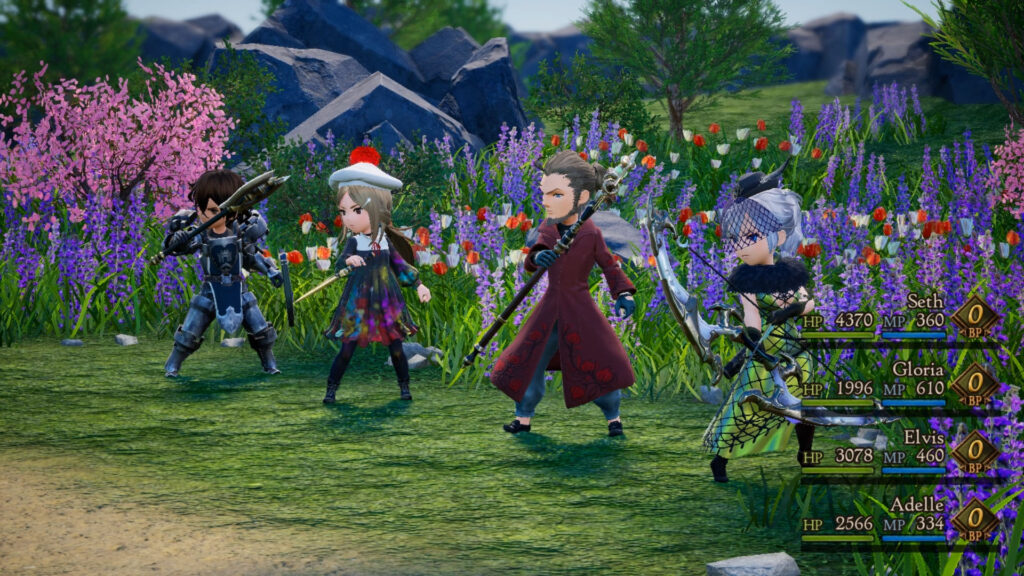
Did you really need three paragraphs’ worth of backstory to appreciate a review of Bravely Default II, the franchise’s most recent spin? Probably not. But the preamble is with purpose — the latest entry comes hot on the heels of the first game’s much-praised innovation, but it’s marred in part by a followup that felt more like an expansion pack. Hence, the developers opted to give this third project a more formal, sequel-shouting moniker. The pressure was on to deliver something special.
Thankfully, I believe Team Asano has largely succeeded. With its vivid cities, charming young swashbucklers, memorable soundtrack and strategic brilliance, Bravely Default II overcomes certain middling aspects with appropriate aplomb.
The story is a collection of cliches woven together by a tapestry of good intent, which is to say, classically Final Fantasy with the contemporary paint job we’ve come to expect. Early moments may induce yawns; particularly grievous is the passing of a character whose death could not have been more telegraphed. Yet to reduce this tale to its tritest and most tiring moments is to miss the forest for the trees; there’s an unmistakable comfort in it all. From the semi-episodic scope of several chapters to the stormy mood of latter bits, always with our plucky heroes traveling to and fro, Bravely Default II is the traditional macaroni and cheese of modern JRPGs. Its plot has all the requisite flavors, and it’s clearly cooked with love. But it never rises to the experimental heights of its predecessors, per se; you can mostly discern its every ingredient straight out the gate.
That being said, the game is not entirely devoid of eye-opening literary bits. Especially toward its end, Bravely Default II challenges preconceptions; I suppose this is the point at which I make a pun about peppering in the unexpected if we’re continuing with my strange gastronomical analogy. More pressingly, it’s seldom the plot itself that endears: it’s the cast that happens to inhabit it.
Principal protagonist Seth just so happens to be an amnesiac youth with a heart of gold. Heroine Gloria just so happens to be a princess from a fallen kingdom. Stalwart Adelle just so happens to be as formidable in battle as she is hungry off the battlefield. Scholarly Elvis just so happens to be a 1950s American rock-and-roll hall-of-famer… I mean, a bit of a skirt-chaser with a love for pubs who’s dressed to impress wherever he wanders. (On second thought, the lame joke accidentally works.) All these “just-so-happens” are there to inform you that on the surface, it’s a quartet of traveling tropes who stand ready for your command.
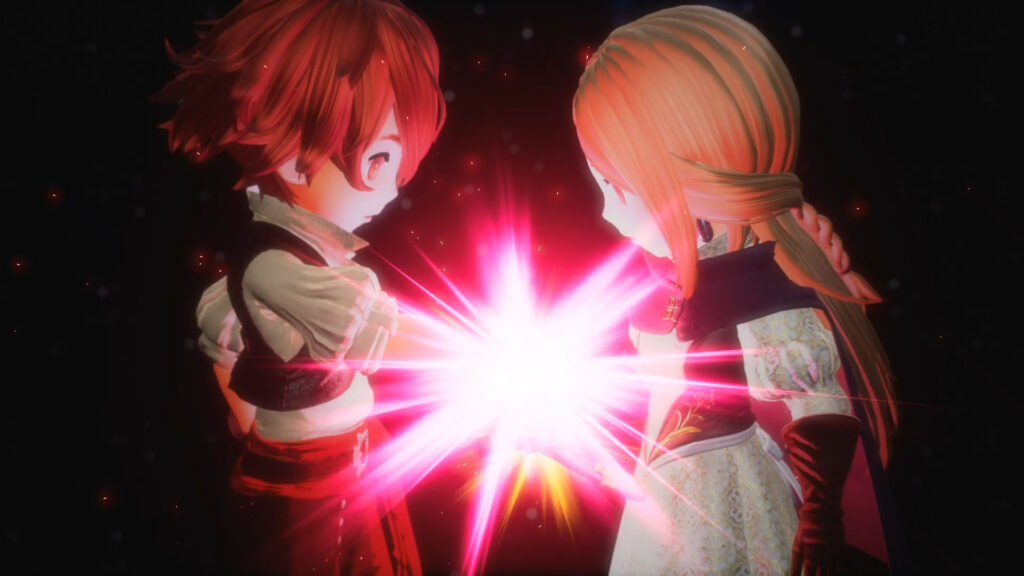
It would be an exaggeration to say that they all develop in grand and theatrical ways by the end — there’s no astounding sense of progression to behold. But there is an innate charm to be found in their entertaining interactions, their earnest resolve, and their tendency to playfully abscond one-another in lighthearted fashion.
The rest of the men and women who inhabit the continent of Excillant are a mixed bag with a few assorted treasures. The quality of Bravely Default II‘s villains is peculiarly uneven, owing perhaps to the fact that in all likelihood, multiple writers left their impact on the narrative. Some of them made me smile. Some made me sigh. One in particular, a musically-inclined fellow with a real thing for trolling, made me glad I played the game with the English dub. Another one, however, almost made me switch to Japanese. Overall, I cannot say I was blown away by the people my party beat down with their swords and spells, but there was more joy to be had in several of the less hostile folks along the way.
Nevertheless, it’s those fancy swords and spells that are likeliest to keep you hooked. Bravely Default II is at its finest when it’s pushing you into challenging battles, demanding your full attention. If you’ve read any earlier reviews for this game, you may have noticed a pattern of praise for its surprising toughness. I tried to avoid peeking at online commentary before diving in, but it only took a few glances to tell me that was the case.
In truth, I’m relieved; I’d hate to think I was just that bad at the boss fights that made me sweat until I got a good grasp of what the game was tasking me to achieve. I’m a two-and-a-half-decade veteran of this genre, and while I’m hardly a wellspring of tactical advice, I tend to breeze through most games with only the occasional stopgap. I suspect the same is true for many of you. Team Asano must be aware of this, for there are so many wrinkles in the well-worn fabric of turn-based combat that I was consistently kept on my toes during climactic encounters. And these wrinkles are, uniformly, a good thing.
It’s the breadth of Bravely Default II‘s characterization options that makes this possible. Not only are there more job classes to unlock than I had guessed going in, but nearly every job is completely viable under the proper circumstances. In my mind, this is a big part of what makes the game less an offshoot of the old formulas and more of a maturation. I’ve rarely, if ever, felt this way about every available class in older RPGs. There’s always been something that didn’t quite work as intended. Not so in Excillant. But beyond straightforward viability, the game’s true trick is in the art of the mix-and-match.
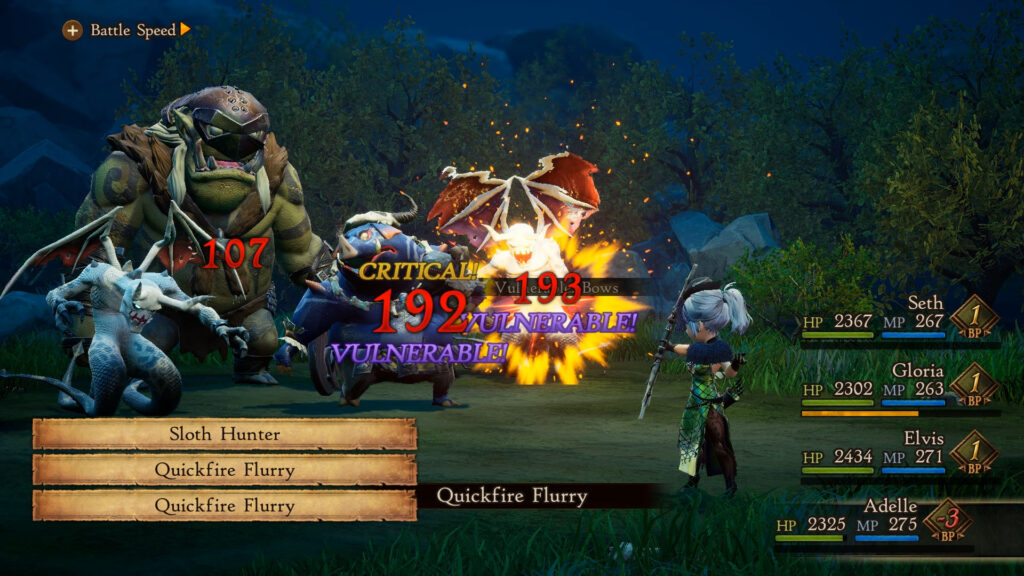
Each character can equip both a main class and a sub-class simultaneously. Only the main class gains points at the end of battle which gradually accumulate to level the class up, so your sub-class will almost always be something you’ve previously leveled. Finding the right synergy between, say, the defensive might of a Vanguard and the damage-dealing counterattacks of a Swordmaster can mean the difference between life and death for sailor Seth.
Beyond all that, you’ll also need to maximize the potential of your passive abilities. Job classes gain active abilities over time — your Black Mages will learn Fire; your Monks will learn to punch really, really well — but they also gain passive abilities, which can be linked together from across any job a character has the requisite familiarity with. This means you can take advantage of starter class Freelancer’s terrific JP-boosting passives for any other class during easier affairs, swapping to something more life-saving when things are suddenly serious.
It all loops together rather fabulously. I can dress Princess Gloria to the nines in a Red Mage’s crimson cloth while upping her speed with passives and increasing her utility with just the right sub-class. At one point in my adventure, that was exactly what I needed. It felt great breaking that boss fight’s grip on me with a strategy all my own. When all else failed, I relied upon the clever risk-reward rush of Brave and Default to either pummel my foes into swift oblivion or shore up my defenses at a critical moment. Just remember the golden rule of Bravely Default: your enemies can do that, too.
Graphically, Bravely Default II is kind of all over the place. Cities still feel more than a bit like pop-up storybooks, a welcome series symbol dating back to the first game. Pleasant watercolors fill many environments with soft yet vibrant hues, increasing the dosage of those lovely little hits of nostalgia. Monster designs are a total standout, with texture work and animation detail that frequently awed me.
Unfortunately, the visuals are sometimes at-odds with their better nature. Traversing the overworld means wondering if Team Asano tried to bite off more than the Switch’s modest tech specs can comfortably provide. Far from the painterly approach viewed elsewhere, this is a mere collection of mediocre-looking biomes that cannot stand tall when inevitably compared to Asano’s earlier Switch effort, 2018’s Octopath Traveler. What’s more, I find myself wishing the character models had more… well, life to them. We’re not quite talking about the dead-eyed nightmares from, say, Theatrhythm Final Fantasy (no offense if that’s your thing, but holy heck, it’s not mine), but I legitimately believe there was more facial panache to be found in Bravely‘s 3DS outings.
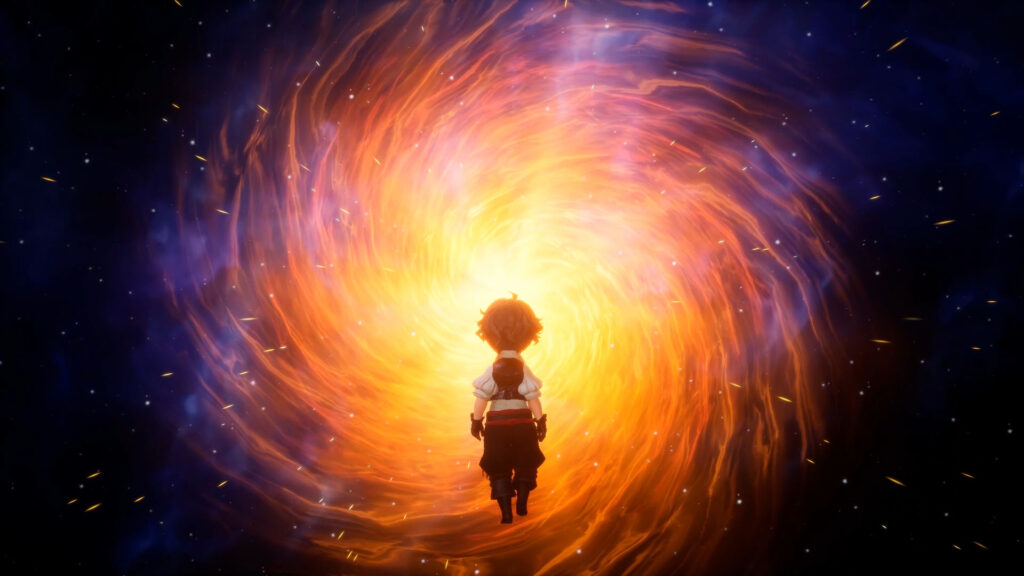
Side quests in Bravely Default II scarcely impressed me on their more mechanical merits. If you’re allergic to the sort of busywork commonly derided as “MMO fetch quests,” you’ll likely find yourself seeking a guide on the internet to help you skip the many tedious beats without missing the few that are worthwhile. And indeed, it would be a mistake to miss those. Some side quests, though their gameplay content is hardly revolutionary, will nonetheless offer the incentive of delightful cast interplay. An early example involves Seth’s hesitation to join in Adelle’s excitement regarding the devouring of a gross-looking fish. It may not sound like much on paper — or on your computer screen, as it were — but like many subsequent scenes, it plays out entertainingly. These scenes are their own reward, fully-voiced and lovingly silly.
Self-proclaimed “fantasy band” Sound Horizon, perennially steered by famed composer Revo, returns to the Bravely Default franchise with another stellar soundtrack. The beauty of Revo’s music has always been in his ability to infuse modern beats with fairy tale vibes. There’s an eclecticism on full display in Sound Horizon’s albums, and certainly in Bravely Default II‘s, a medley of quasi-Celtic symphonic rock opera that perfectly encapsulates the old-meets-new allure of this franchise. Simpler to say, music is an important part of video games for me and I wasn’t disappointed here in the least.
It would be remiss of me not to mention Bravely Default II‘s odd little online element. Very early on, you’ll learn about boat exploration, a snazzy shtick that gives lucrative meaning to all those hours your Switch is in sleep mode. Set your boat out into the seas before you finish playing and recall it to a port when next you play. An easy-peasy proposition, and one that’ll gain you some surprisingly nice items. Prime examples include JP and experience orbs that will help ease you from the game’s grind.
Bravely Default II is a tactician’s wonderland, ever at the ready to offer new and exciting class combinations and ability combos. It’s a video game that asks its player to think ahead and not rely upon all of the genre’s most common winning strategies. It’s also a video game with few exceptions to its relatively uninspired plot, and its themes lack the deeper finesse seen in other contemporary Japanese productions, such as Persona 5 and Final Fantasy XIV. For those who seek multi-layered storytelling or an easy ride through fights, I would say, “look elsewhere.”
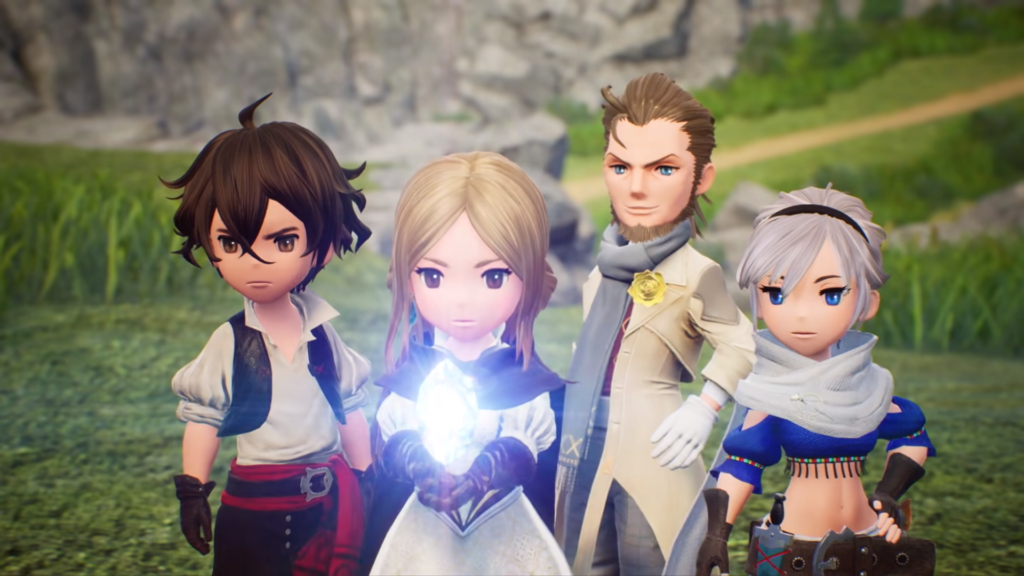
To others like myself, who crave those story-driven games just the same but sometimes find solace in simpler trappings rich in difficulty, this is Dragon Quest by way of Etrian Odyssey. It’s familiar yet refined, stereotypical but bursting with intricacy. Its leading cast is authentic and sympathetic, enamoring enough to occasionally move you in unexpected ways but self-aware enough to get out of the way and let you play.
Bravely Default II is by no means a perfect game. It’s riddled with tiny inconveniences, marred by some iffy graphical parts, and predominantly in the first half, its plot is somewhat of a drag. To look past all that is to find a diamond in the rough. An intensely gratifying battle system absolutely filled with possibilities awaits, with epic tunes to get you pumped. When the visuals shine, they shine sublime, and when the plot comes together, it can be fleetingly glorious. Seth, Gloria, Elvis, and Adelle are a nice bunch worth rooting for and Excillant is a land worth fighting for.
Sometimes that’s more than enough.
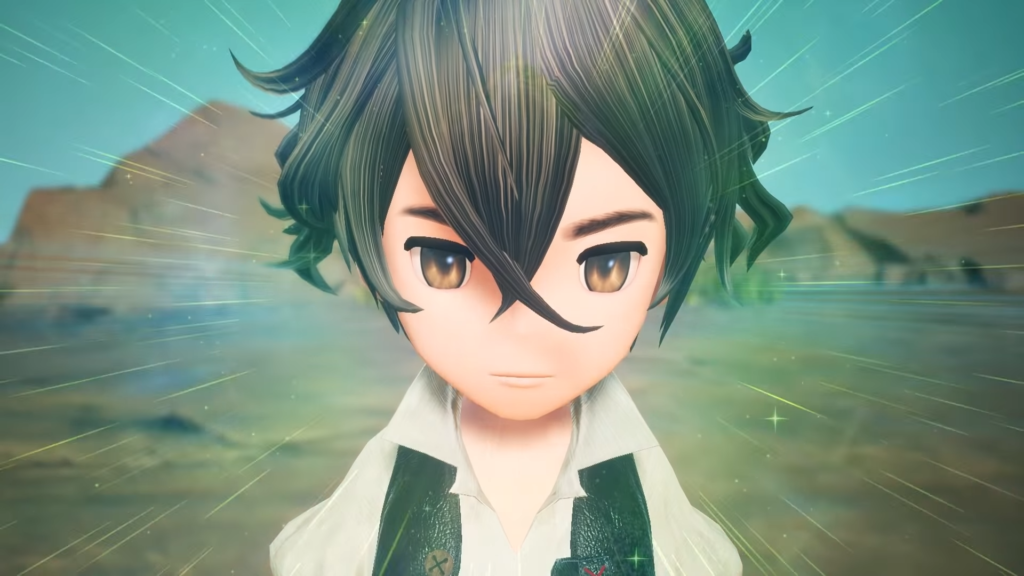
Recent Comments